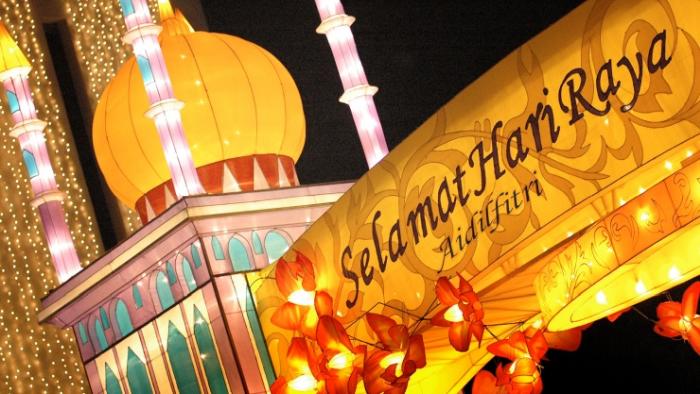lareddepathways.com – Hari Raya Puasa, also known as Eid al-Fitr, is one of the most important and joyous celebrations for Muslims in Singapore and around the world. It marks the end of Ramadan, a month of fasting, prayer, and reflection. The festival is a time of gratitude, forgiveness, and reunion, celebrated with festive prayers, open houses, and an abundance of traditional Malay delicacies. In Singapore, Hari Raya Puasa is a vibrant and heartfelt occasion that brings together families, friends, and the community to share in the joy of the occasion.
The End of Ramadan: A Time for Reflection and Renewal
Hari Raya Puasa, which means “Day of Celebration,” is observed on the first day of Shawwal, the tenth month of the Islamic lunar calendar. It signifies the end of Ramadan, a month during which Muslims fast from dawn to sunset as an act of spiritual discipline, self-control, and empathy for those who are less fortunate.
As Ramadan concludes, Hari Raya Puasa becomes a time for Muslims to give thanks for the strength and patience they have shown during the fasting month and to seek forgiveness for any wrongdoings. It is also a time to forgive others and come together in the spirit of peace and unity.
Festive Prayers and Gratitude
The day of Hari Raya Puasa begins with Eid prayers, which are performed at mosques across Singapore. Large congregations of Muslims gather early in the morning to offer prayers of gratitude and seek blessings for the year ahead. The mosques are filled with a sense of community and spirituality, as people come together to mark the end of Ramadan and welcome the festive season.
It is customary for Muslims to visit the graves of their loved ones after prayers to offer prayers for the deceased and reflect on the impermanence of life. This act of remembrance highlights the values of humility, compassion, and gratitude that are central to the celebration of Hari Raya.
Open Houses: A Tradition of Hospitality and Togetherness
One of the most distinctive features of Hari Raya Puasa in Singapore is the tradition of open houses, where families open their homes to relatives, friends, and neighbors, regardless of faith or background. This practice fosters a sense of togetherness and allows people to share in the joy of the occasion.
Visitors are warmly welcomed into homes decorated in bright, festive colors, and it is customary to exchange greetings of “Selamat Hari Raya” (Happy Hari Raya) and ask for forgiveness by saying “Maaf Zahir dan Batin” (Forgive me outwardly and inwardly). This exchange of goodwill and reconciliation emphasizes the themes of forgiveness and renewal that are central to the celebration.
Traditional Malay Delicacies: A Feast for the Senses
Food plays a central role in Hari Raya Puasa, with families preparing a wide array of delicious Malay delicacies to share with their guests. After a month of fasting, the festive spread is a feast for the senses, with dishes that reflect the rich culinary heritage of the Malay community in Singapore. Some popular dishes include:
- Ketupat: Rice cakes wrapped in woven palm leaves, often served with a variety of side dishes.
- Rendang: A slow-cooked, rich and flavorful dish made with beef or chicken, cooked in coconut milk and spices.
- Satay: Skewered and grilled meats served with a spicy peanut sauce.
- Lontong: A dish made with compressed rice cakes served with vegetables in coconut curry.
- Kuih Raya: A selection of traditional festive cookies and cakes, such as kuih lapis (layered cake) and pineapple tarts.
These festive dishes are often prepared in large quantities, as families anticipate many visitors during the open house gatherings. The sharing of food is a symbol of hospitality, generosity, and community spirit, making Hari Raya Puasa a time of abundance and joy.
Vibrant Festivities and Cultural Celebrations
In the weeks leading up to Hari Raya Puasa, Singapore’s Geylang Serai district comes alive with the bustling Hari Raya Bazaar and stunning light displays. The bazaar is a popular destination for locals and tourists alike, offering a wide variety of festive treats, traditional clothing like baju kurung and baju Melayu, and decorative items for the home.
The streets of Geylang Serai are adorned with colorful lights, creating a festive atmosphere that reflects the joy and excitement of the upcoming celebration. This lively district becomes a hub of activity during Ramadan, as people gather to break their fast, shop for festive essentials, and immerse themselves in the spirit of Hari Raya.
Conclusion
Hari Raya Puasa is a time of joy, reflection, and unity for Muslims in Singapore. The celebration marks the end of Ramadan and is filled with festive prayers, acts of forgiveness, and the sharing of traditional Malay delicacies. The open houses, where families welcome guests with warmth and generosity, embody the spirit of togetherness that defines the festival. With its vibrant cultural traditions and deep sense of community, Hari Raya Puasa is a cherished and meaningful occasion that brings people closer, fostering harmony and gratitude across Singapore.

